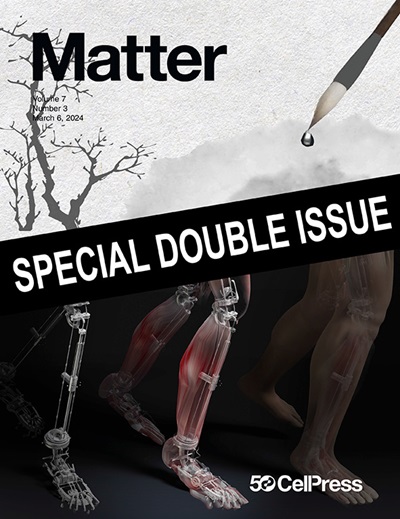Water-induced degradation mechanism of metal halide perovskite nanocrystals
IF 17.3
1区 材料科学
Q1 MATERIALS SCIENCE, MULTIDISCIPLINARY
引用次数: 0
Abstract
Metal halide perovskites have emerged as promising materials for diverse optoelectronic devices due to their superior optical properties. However, their instability in moisture hinders practical use, highlighting the need for an atomic-scale understanding of their degradation mechanism. Here, we uncover water-induced degradation pathways of perovskite nanocrystals using in situ liquid-phase transmission electron microscopy, revealing a distinctive dissolution process driven by ion solvation. The dissolution rates vary according to crystallographic direction, influenced by the surface polarity of different crystal facets, leading to a shape transformation from nanocubes to nanospheres. These observations are further supported by in situ X-ray scattering analysis. Notably, surface passivation of perovskite nanocrystals with halide ion pair ligands provides effective edge passivation, alters the degradation trajectories by preserving their cubic shape during the initial stages, and significantly reduces the overall degradation rate. This study offers critical insights into the water-induced degradation mechanisms of perovskite nanocrystals, potentially guiding strategies to enhance their stability.


金属卤化物钙钛矿纳米晶水致降解机理研究
金属卤化物钙钛矿由于其优越的光学性能而成为各种光电子器件的有前途的材料。然而,它们在水分中的不稳定性阻碍了实际应用,突出了对其降解机制的原子尺度理解的必要性。在这里,我们利用原位液相透射电子显微镜揭示了钙钛矿纳米晶体的水诱导降解途径,揭示了一个由离子溶剂化驱动的独特溶解过程。受不同晶面表面极性的影响,溶解速率随结晶方向的变化而变化,导致从纳米立方体到纳米球的形状转变。这些观测结果进一步得到了原位x射线散射分析的支持。值得注意的是,卤化物离子对配体对钙钛矿纳米晶体的表面钝化提供了有效的边缘钝化,在初始阶段通过保持其立方形状来改变降解轨迹,并显着降低了整体降解速率。这项研究为钙钛矿纳米晶体的水诱导降解机制提供了重要的见解,可能指导提高其稳定性的策略。
本文章由计算机程序翻译,如有差异,请以英文原文为准。
求助全文
约1分钟内获得全文
求助全文
来源期刊

Matter
MATERIALS SCIENCE, MULTIDISCIPLINARY-
CiteScore
26.30
自引率
2.60%
发文量
367
期刊介绍:
Matter, a monthly journal affiliated with Cell, spans the broad field of materials science from nano to macro levels,covering fundamentals to applications. Embracing groundbreaking technologies,it includes full-length research articles,reviews, perspectives,previews, opinions, personnel stories, and general editorial content.
Matter aims to be the primary resource for researchers in academia and industry, inspiring the next generation of materials scientists.
 求助内容:
求助内容: 应助结果提醒方式:
应助结果提醒方式:


